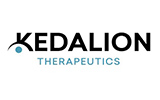1. Preface
1.1. Objectives of the Study
1.2. Market Segmentation & Coverage
1.3. Years Considered for the Study
1.4. Currency & Pricing
1.5. Language
1.6. Stakeholders
2. Research & Forecasting
2.1. Research Methodology
2.1.1. Research Process
2.1.2. Research Framework
2.1.3. Research Reliability & Validity
2.1.4. Research Assumptions
2.2. Forecasting Methodology
3. Executive Summary
3.1. Market Outlook
3.2. Market Data Feed
4. Premium Insight
4.1. Market Connectivity
4.2. Market Dynamics
4.2.1. Drivers
4.2.2. Restraints
4.2.3. Opportunities
4.2.4. Challenges
4.3. Porters Five Forces Analysis
4.3.1. Threat of New Entrants
4.3.2. Threat of Substitutes
4.3.3. Bargaining Power of Customers
4.3.4. Bargaining Power of Suppliers
4.3.5. Industry Rivalry
4.4. Client Customizations
5. Global Digital Oilfield Market, by Solution
5.1. Overview
5.2. Market Sizing & Forecasting
5.3. Automation and Instrumentation
5.3.1. CPM
5.3.2. DSC
5.3.3. PLC
5.3.4. SCADA
5.3.5. Smart Well
5.3.6. Wireless Sensor
5.4. IT Services
5.4.1. Computer Equipment
5.4.2. IT Outsourcing
5.4.3. IT Services and Commissioning
5.4.4. Software
6. Global Digital Oilfield Market, by Process
6.1. Overview
6.2. Market Sizing & Forecasting
6.3. Drilling Optimizations
6.4. Production
6.5. Reservoir
7. Global Digital Oilfield Market, by Geography
7.1. Overview
7.2. Market Sizing & Forecasting
7.3. Americas
7.3.1. Argentina
7.3.2. Brazil
7.3.3. Canada
7.3.4. Chile
7.3.5. Mexico
7.3.6. United States
7.4. Asia-Pacific
7.4.1. Australia
7.4.2. China
7.4.3. India
7.4.4. Indonesia
7.4.5. Japan
7.4.6. Malaysia
7.4.7. Philippines
7.4.8. South Korea
7.4.9. Thailand
7.5. Europe, Middle East & Africa
7.5.1. Denmark
7.5.2. France
7.5.3. Germany
7.5.4. Italy
7.5.5. Netherlands
7.5.6. Qatar
7.5.7. Russia
7.5.8. Saudi Arabia
7.5.9. South Africa
7.5.10. Spain
7.5.11. United Arab Emirates
7.5.12. United Kingdom
8. Competitive Landscape
8.1. FPNV Positioning Matrix
8.1.1. Quadrants
8.1.1.1. Forefront
8.1.1.2. Pathfinders
8.1.1.3. Niche
8.1.1.4. Vital
8.1.2. Business Strategy
8.1.2.1. Business Growth
8.1.2.2. Industry Coverage
8.1.2.3. Financial Viability
8.1.2.4. Channel Support
8.1.3. Product Satisfaction
8.1.3.1. Value for Money
8.1.3.2. Ease of Use
8.1.3.3. Product Features
8.1.3.4. Customer Support
8.2. Market Vendor Ranking Analysis
8.3. Competitive News Feed Analysis
9. Company Usability Profiles
9.1. Baker Hughes Incorporated
9.1.1. Overview
9.1.2. Strategy
9.1.3. SWOT
9.2. Halliburton Company
9.2.1. Overview
9.2.2. Strategy
9.2.3. SWOT
9.3. National Oilwell Varco, Inc.
9.3.1. Overview
9.3.2. Strategy
9.3.3. SWOT
9.4. PointCross Life Sciences Inc.
9.4.1. Overview
9.4.2. Strategy
9.4.3. SWOT
9.5. Schlumberger Limited
9.5.1. Overview
9.5.2. Strategy
9.5.3. SWOT
9.6. ABB Limited
9.7. Honeywell International Inc.
9.8. Paradigm Limited
9.9. Pason Systems Inc.
9.10. Weatherford International plc
10. Appendix
10.1. Discussion Guide
10.2. Additional Competitive News Feed
10.3. Competitive Strategic Window
10.3.1. Leverage Zone
10.3.2. Vantage Zone
10.3.3. Speculative Zone
10.3.4. Bottleneck Zone
10.4. Top Reports
10.4.1. Global Crane Rental Market
10.4.2. Global Computer Vision Market
10.4.3. Global Payment Gateway Market
10.4.4. Global B2B Travel Market
10.4.5. Global Varicose Vein Treatment Devices Market
10.5. Author Details























